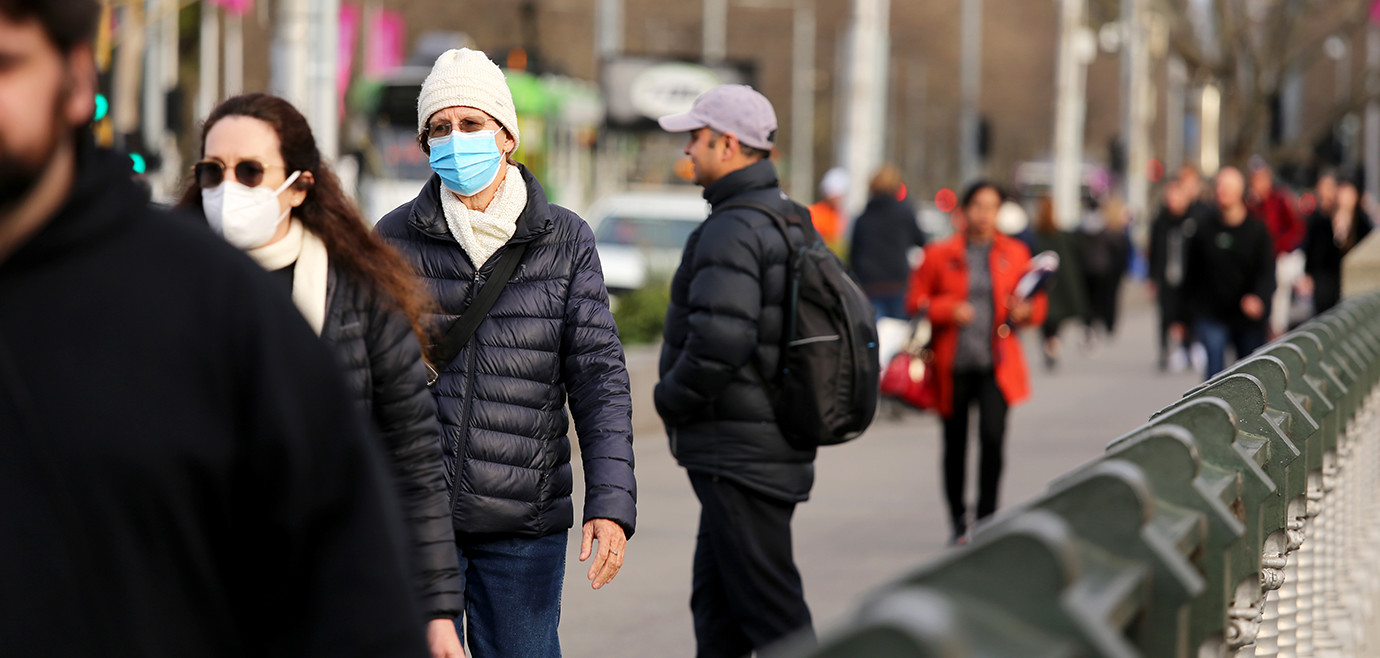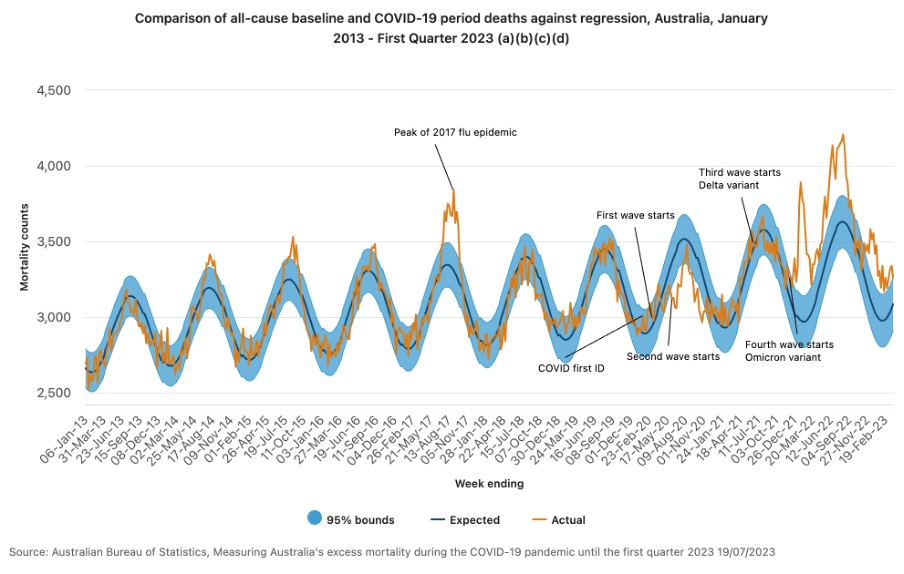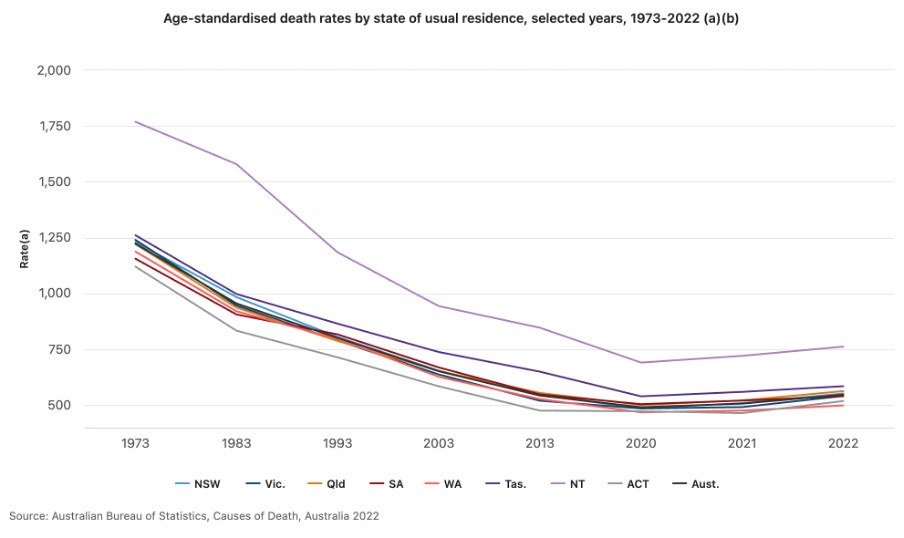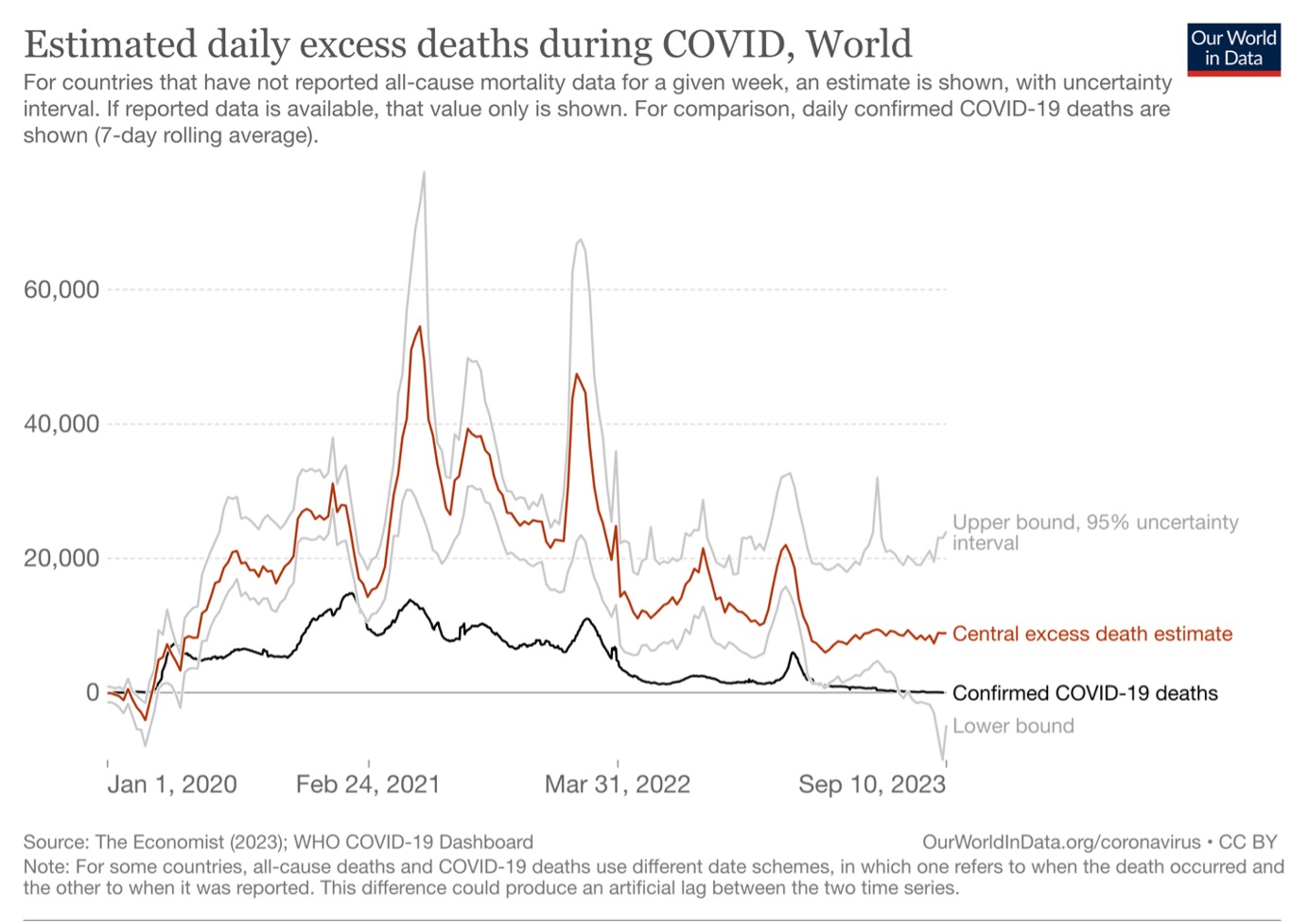
New Australian Bureau of Statistics (ABS) data showing COVID-19 was the third leading cause of death in Australia in 2022 is a salient reminder of the need for better recognition of the impacts of the pandemic and an enhanced response from government and community.
According to the ABS, it’s the first time in more than five decades that an infectious disease has figured in the top five causes of death in Australia, and deaths from COVID-19 contributed significantly to an increase in the mortality rate from all causes, which was the highest since 2015.
Among the ABS key findings for 2022:
- There were 190,939 deaths in Australia, almost 20,000 more than 2021 – all cause mortality is around 13 percent above expected;
- The number of deaths is expected to increase over time, however the age-standardised death rate has increased during the pandemic (548 per 100,000 in 2023) leading to excess mortality (higher than expected)
- COVID-19 caused 9,859 deaths, the third leading cause, and was mentioned as a contributing factor on a further 2,782 death certificates;
- The rate of death from COVID-19 (27.1 per 100,000) has increased over the course of the pandemic;
- Whilst these deaths were predominantly in older people - median age 86 years - COVID-19 still resulted in premature deaths, measured by “years of life lost” (YLL). COVID-19 caused 24,000 YLL, parallel with diabetes, and the only infection.
Note: the deaths reported via the ABS are from death certificates, which are different (lower estimates) than surveillance definitions or excess mortality.
“Whilst Australia has had an outstanding response, particularly in the pre-Omicron era, the ongoing impact of COVID-19 as a major public health issue in this post-emergency phase is clear, and more could and should be done,” Associate Professor Suman Majumdar, Burnet Institute Chief Health Officer – COVID and Health Emergencies, said.

“This starts with better recognition of the problem, particularly by governments – state and federal – but also by the community. Better recognition is the first step to better actions.
“As of August this year we’ve already had over 3100 registered COVID-19 deaths (ABS), so we’re on track for 4,000-5,000 deaths (but over 10,000 excess deaths), which means it will still be in the top-10 causes.
“We will have further waves, due to the evolution of the virus, where it is escaping our current strategy of widespread immunity via vaccination and recent infection.
“Therefore, COVID remains one of the most consequential and significant infectious diseases in Australia and globally.
“Adding to this are the indirect impacts of the pandemic, particularly on the health system’s ability to respond to other critical health issues in low- and middle-income countries, such as immunisation.”
“But across all the negative impacts of COVID-19 and the pandemic, the groups that have fared worst are those already affected by inequities – older people, particularly in residential aged care, economically disadvantaged people, First Nations and culturally and linguistically diverse communities, and younger people and adolescents.”
Associate Professor Majumdar said it’s critical to consider impacts of COVID-19 that are not addressed by the ABS data, including long-COVID – experienced by more than 65 million people globally, or five-to-10 percent of people infected.

“These people will experience symptoms that persist way beyond that initial acute period including shortness of breath, brain fog, and lethargy – they're very common,” he said.
“But a number of studies have looked at the effect of COVID up to two years after initial infection and links to conditions such as diabetes, heart disease, stroke, depression and dementia.
“The issue of long COVID is complex – it's an umbrella term that encompasses multiple mechanisms that may include the potential reactivation of other viruses and other auto immune effects – but what is clear is that long COVID is real, and it's still a huge burden.
“The way to combat this is to avoid infections and reduce transmission, but also to develop targeted treatments – and that's where there's a huge focus for future research, finding effective treatments for long COVID.”

Associate Professor Majumdar said the priority for individuals should be to avoid infection and re-infections via up-to-date vaccination; to seek out and breathe clean air in indoor settings through ventilation and filtration (and wear a mask if you can’t, or in crowds); to get tested to enable protecting others; and to access medications if eligible.
Protective measures are especially important for individuals at risk of severe COVID-19 and in priority and high transmission or congregate settings such as residential and health care, education facilities and workplaces.
LISTEN to Associate Professor Majumdar discuss the ABS data with ABC Radio Ballarat Breakfast host Debbie Rybicki at 1:37:15.
